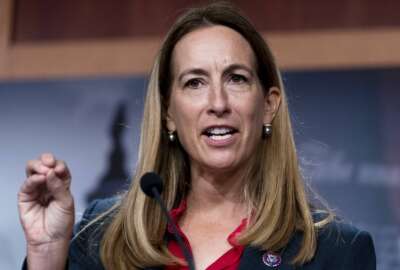Insight by FEBA
Navigating the complexities of federal retirement benefits
Federal retirement benefits require specialized advice to maximize. Feds planning to retire need a fiduciary who specializes in federal retirement.
Federal employee benefits are one of the top incentives that keeps people in government jobs throughout their careers. And those benefits don’t end when they retire; some of the best federal benefits are specifically geared toward retirement, or follow those employees for the rest of their lives. But federal retirement benefits are also complex, requiring specialized knowledge and advice to get the most out of them.
Here are six benefits that affect a federal employee’s retirement, as well as a brief overview of what to consider about each when planning to retire:
Pension
There are actually two federal employee pension systems: The Civil Service Retirement System (CSRS) and the Federal Employee Retirement System (FERS). Most federal employees these days are on FERS; only federal employees who began their service before January 1, 1984 are on CSRS. CSRS offered feds an annuity that amounts to a percentage of the average of their three highest-earning years of employment. FERS offers a pension that is a lower percentage of their high-three, but combines it with Social Security benefits and the Thrift Savings Plan, the government’s version of a 401k plan.
The FERS pension formula is 1% of your high-three average salary, multiplied by your years and months of service. If you retire at age 62 or older and have 20+ years of service, that percentage becomes 1.1%. So someone who is 62, with 20 years of service and a high-three average of $70,000 would receive an estimated annual pension of around $15,400, or about $1,283 monthly.
Social Security
Federal employees pay 6.2% of every paycheck into Social Security, the second leg of the FERS retirement income tripod. The government matches that, which means 12.4% of every paycheck is going toward their retirement. It’s more complicated with CSRS employees, who should consult a financial adviser who specializes in federal retirement to see if they qualify for Social Security.
FERS retirees need 40 quarters of qualified employment to earn Social Security benefits, which will then be based on their highest 35 years of earnings. They can begin taking Social Security at age 62, but that’s technically considered early retirement. Feds who chose to do that will receive the smallest payments, but will also receive the most payments over time. The payment amount goes up a percentage every year until age 70, when it maxes out. Feds who retire at 70 will get the biggest payments, but the fewest. It does not grow after 70; feds who don’t claim Social Security at age 70 are leaving money on the table for no reason.
TSP
Finally, there’s the TSP. The government’s version of a 401k plan consists of five core funds: G, C, I, F and S. Then there are the Lifecycle funds, which consist of a blend of each of the core funds targeted at a specific retirement year.
The TSP is one of the most important and beneficial government benefits. While it is one of the simplest 401k structures, it can do a great job of accumulating retirement dollars while you work if used correctly. The biggest reason for that is the matching contribution: The government will match up to 5% of each paycheck if you invest that much in your TSP.
Another benefit is that unlike the pension or Social Security, TSP has liquidity. Retirees have far more control over how much they withdraw from it. Finally, the contribution limits are huge; federal employees and retirees can find out what those limits are and keep up with yearly changes at TSP’s website.
While TSP is a great accumulation tool, it has limitations in the pre-retirement and income phases because of the lack of diversification. It is vitally important to consult with a financial professional who truly understands TSP, its options and the rules that apply to it so you can Maximize it later in your career and into retirement.
FEHB
The Federal Employee Health Benefits (FEHB) program is the government’s health insurance, of which it pays 72%; employees only pay 28% of the cost. Feds can take their FEHB into retirement as long as they were covered for five consecutive years, up to their retirement date. That also includes qualified family members, who can also be added during major life events or any Open Season.
One common myth about the FEHB in retirement is that it gets more expensive. But what’s actually happening is the same yearly deduction is being split across 12 pension payments, rather than 26 paychecks. So the payments are larger, but fewer. However, the deductions do come out after taxes in retirement, unlike when feds are working.
Survivor benefits
If a retired federal employee passes away before their spouse, that spouse does get some benefits. However, those are difficult to calculate and generally require the help of a qualified financial adviser to determine. In addition, there are differences between how that’s calculated between FERS and CSRS.
FEGLI
Finally, there’s the Federal Employee Group Life Insurance (FEGLI). This is often the most confusing because most people don’t know which option they have or what they’re paying. Those options are:
- Basic: Costs $10-30+ per pay period. It’s very inexpensive while you work but the price increases dramatically in retirement. It pays your adjusted base salary rounded to the next thousand, plus $2,000.
- Option A: Cheapest at $2 per pay period, then $6 per pay period once you turn 60 (regardless of if you’re retired). It pays $10,000.
- Option B: Pays up to five times your salary. It’s generally a good deal while you’re young but becomes expensive as you get older because the cost rises every five years. This can create a life insurance trap as you get older if you don’t understand the price increase and plan accordingly.
- Option C: Optional family coverage with up to five multiples. Each multiple is $2,500 for children or $5,000 for spouses.
See a fiduciary
These are just basic overviews of very complicated federal benefits. Unfortunately, federal agencies don’t have retirement officers anymore, and call centers don’t offer personalized advice on benefits. Meanwhile, fiduciaries are financial advisers required to act in your best interests. Only 11% of financial advisers are fiduciaries. However, of those, few are trained in the intricacies of federal benefits, which require deep and specialized knowledge.
Justin T. Pierce and James M. Campbell are fiduciaries as well as federal retirement consultants (FRCs). They are the managing partners of Federal Employee Benefit Advisors and have a whole team of FRCs. Join Justin T. Pierce and James M. Campbell in their next complimentary webinar.
Demystifying Your Federal Retirement Benefits!
Thurs., Feb. 6, 1 pm ET
Free 60-minute webinar with Q&A following
Register Now
- Forms Needed for Retirement
- FERS/CSRS Pension
- Special Retirement Supplement
- Survivor Benefits
- FEHB (Health Benefits)
- FEGLI (Life Insurance)
- Social Security Maximization
- TSP Maximization
Copyright © 2025 Federal News Network. All rights reserved. This website is not intended for users located within the European Economic Area.





